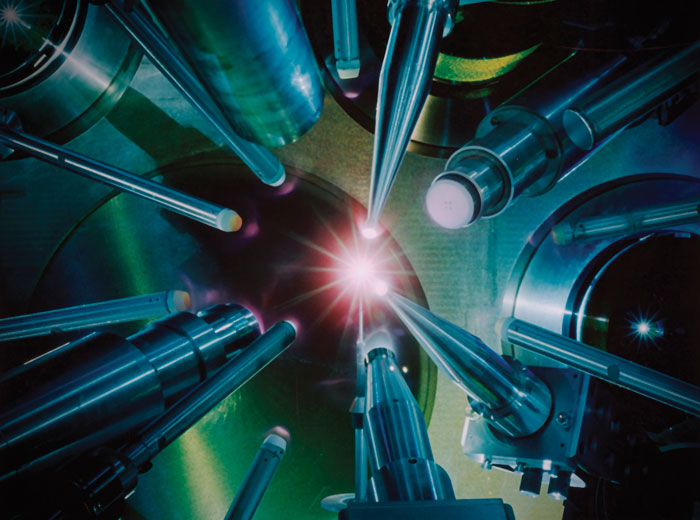
ASP: National Academy Report on Inertial Fusion Energy Points a Way Forward to Energy Security
We congratulate the National Research Council of the National Academy of Sciences for the release of their interim report: “An Assessment of the Prospects for Inertial Fusion Energy.”
BGen Stephen Cheney, ASP’s CEO said: “This is an important report that shows that the nation’s leading scientists, drawn from industry and academia, believe that the prospects for fusion energy are strong enough to warrant significant future research and development.”
The American Security Project strongly agrees with the National Academy’s finding that “The scientific and technological progress in inertial confinement fusion has been substantial during the past decade.” We are hopeful that this rapid advance in technology can lead to substantial breakthroughs in energy production. Fusion energy, whether generated from inertial confinement, or from magnetic confinement, as the international ITER project would use, has the potential to be a source of carbon-free energy that could break America’s energy security and environmental sustainability challenges.
We further agree with the national academy’s second finding, that “It would be premature at the present time to choose a…preferred option for an inertial fusion energy demonstration plant.” Although the science is advancing rapidly, there is still great deal that we do not know about how to build a demonstration plant. ASP believes that the United States needs a broad fusion research program that allocates funding, based on merit and promise, to all sorts of fusion research. As with all sorts of research on fusion, we agree too that it is premature for the government to choose one approach to inertial confinement.
Finally, we agree with the National Academy’s recommendation that planning should immediately begin to use the National Ignition Facility (NIF) for “an assessment of the feasibility of inertial fusion energy.” The NIF, featuring the world’s most powerful laser, is one of the greatest, if largely unrecognized, technological achievements of the U.S. Government. We believe that it is very important for the NIF to not only fulfill its national security mission – testing plasma conditions in nuclear weaponry – but also to play a role in America’s future energy security.
Background
Inertial Confinement fusion is a form of energy generation that releases tremendous amounts of energy by compressing hydrogen. The inertial process uses lasers to compress a target comprised of a hydrogen fuel mixture that combines deuterium and tritium (DT), two forms of hydrogen. The potential energy gain from such a reaction is massive: burning only 12 mg of a 50-50 DT mixture yields 4.2GJ of energy – equivalent to one ton of TNT. Unfortunately, we have not yet been able to create the optimal conditions to achieve “energy gain” – where the energy released is greater than that used to create the reaction. However, the NIF is conducting a 2-year National Ignition Campaign in which they plan to exceed that critical break-even point.







[…] that it is important to America’s energy security to invest in this research, and we have praised a recent report from the National Academy of Sciences calling for greater research into inertial confinement. Some […]